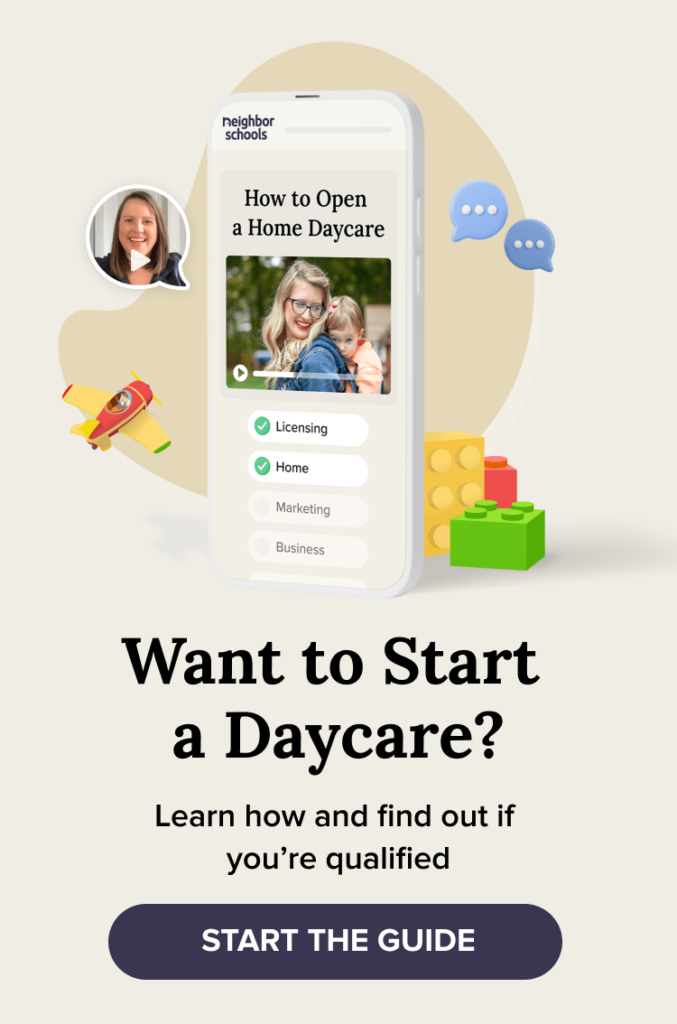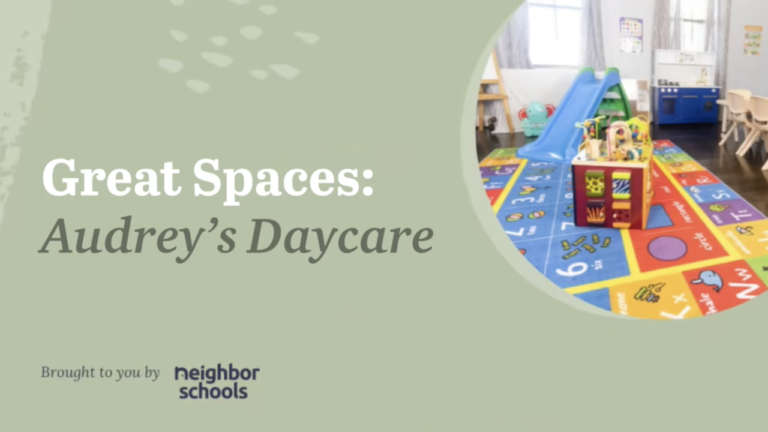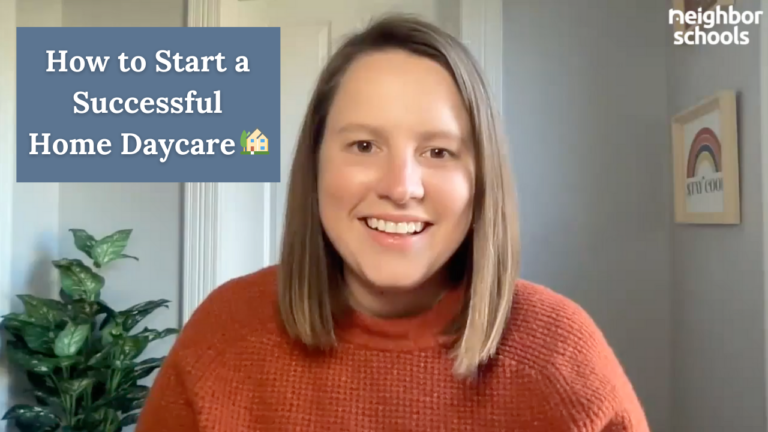- Work from home and take care of your own children at the same time
- Be your own boss, set your own schedule, and give back to your community
- Earn more money doing work you love
Just looking for general info? Read on – we’ve outlined the basics below, but if you’re ready to take the next step be sure to check out the guide.
Remember, you’ve got this, and we’ve got you. Let’s do it.
In this How-To Overview
Let’s walk through each of the steps. Keep in mind that this is a general overview, and that exact policies and details will vary by state.
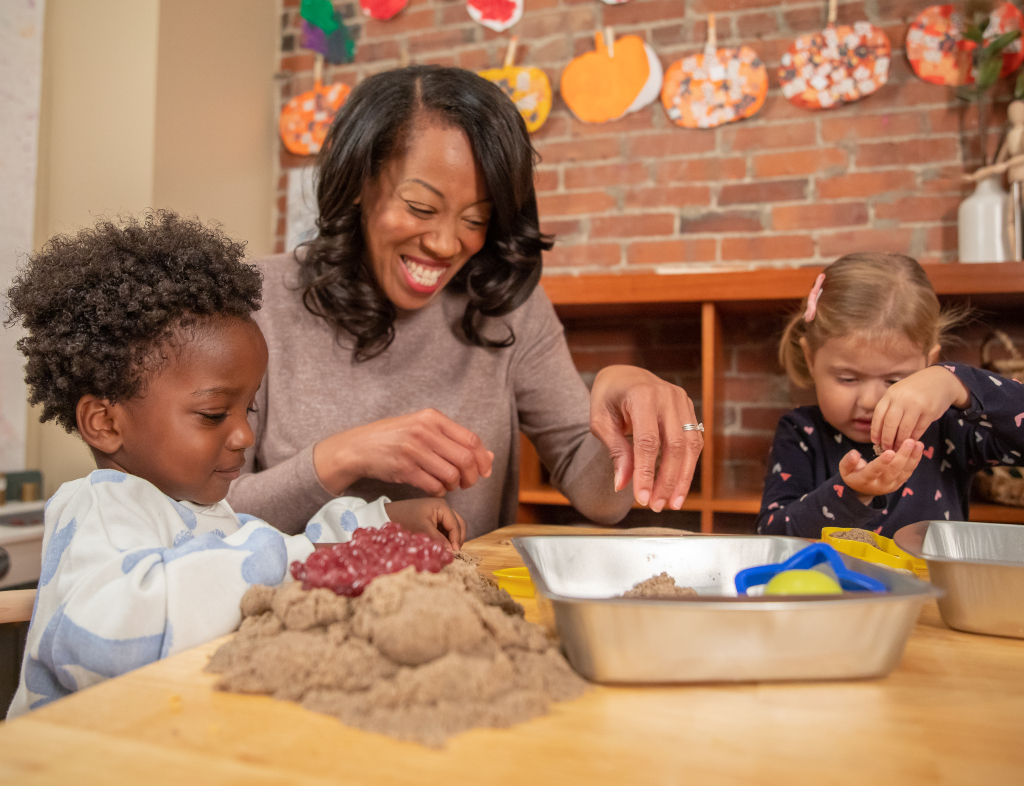

But first, are you qualified to open a home daycare?
To get your daycare license, you don’t have to have a long resume of childcare experience or a Masters Degree in Early Childhood Education
All you need is real, valuable experience with infants and toddlers. In many states, being a parent is enough, and many of our most successful providers are moms with young children at home. Others are early-childhood professionals who’ve been working with children for years.
We’re confident that you’ll be qualified to run your own home daycare. So, let’s dive into everything you need to do it successfully.
Part 1: Apply for a Home Daycare License
Each state’s licensing process is different. Some do everything in an online portal. Others are still using paper and pen. That’s why we’ve created state-specific guides—so you’ll know exactly what the requirements are to start your home daycare. Get the guide to learn how to open a daycare in your state.
In most states, like Massachusetts and New York, licensing takes 2 to 3 months. It involves online trainings, background record checks, and a home inspection. Plus, filing a lot of paperwork with the state licensing body.
It’s worth noting that states use different terms to refer to home daycare. In many, it’s called Family Child Care (FCC) and you’ll apply for a Family Child Care License.
Part 2: Setup Your Home
Whether you rent or own your home, it’s important to begin setting up your space at the start of the licensing process. This is because your license is not just for you as the provider; it’s also for your specific daycare space, and you’ll need to meet a bunch of health and safety requirements.
By getting your space ready now, you’ll be able to move through licensing more quickly and can open as soon as you get your license.


Here’s what you’ll need to start a daycare in your home:
Children’s furniture
You’ll use kid-sized tables and chairs for lots of activities, including lunchtime and arts and crafts.
Equipment and toys for developmentally appropriate activities
Having tools and toys that support the growth of children in your care is crucial. Here are some ideas for different developmental areas:
- Gross motor skills: Large soft blocks and structures that kids can climb on or in
- Fine motor skills: Smaller toys that engage hands and minds, such as puzzles, play-dough, stuffed animals, dolls, and toy cars. Be sure not to introduce anything that could be a choking hazard.
- Sensory play: Water tables, sensory sand, pillows, scarves, and textured books
- Arts and crafts: Crayons, paints, paper, glue, and more. If you have a safe driveway area, don’t forget about chalk.
- Dress up and pretend-play: A kids’ kitchen, costumes, and puppets
Nap time needs
You’ll be required to have a crib or pack and play for every individual infant in your care. For older children, you’ll provide a mat or cot, and you need to be able to space them out. Additionally, every child will have their own bedding, so it’s a good idea to have a specific storage area for nap time items.
Mealtime supplies
Every infant and toddler requires a highchair. You’ll also need plenty of kid-friendly plates, cups, and utensils.
Entryway items
Create cubbies or hooks for each child to store jackets, shoes, backpacks, and anything else they bring from home. This is also a good spot to post key documents such as your license, CPR/first aid certification, emergency contacts, and evacuation plan.
Bathroom and changing station
Your daycare needs to include a bathroom, with a sink, step stool, and toilet for children who are out of diapers. The door should have a safety release from the outside so that kids can’t lock themselves in. Your changing station should include a sturdy table with sanitary paper, diaper storage, and a locking trash can or diaper pail.
Outdoor space
Whether it’s your backyard or a nearby park, having a designated outdoor area is important.
First aid kit
A complete first aid kit is required. Make sure it’s easily portable—you’ll have to bring it with you anytime you and the children leave the house.
Other health and safety requirements
This includes basics like having smoke and carbon monoxide detectors, exit signs, safety gates at stairs, and cabinet locks. Other important details include getting a lead inspection, removing any cracked or peeling paint, securing furniture that could fall (such as a bookshelf or television), and regulating the temperature of your home’s hot water.
If you have pets, you’ll need up-to-date vaccination records for them before you can get licensed. Any litter boxes will need to be kept in a room that the children can’t access.
Step 3: Establish Your Business
Part of being a home daycare provider is being a small-business owner. But home daycares are different from many other types of small businesses. To be successful, start with a few key items.
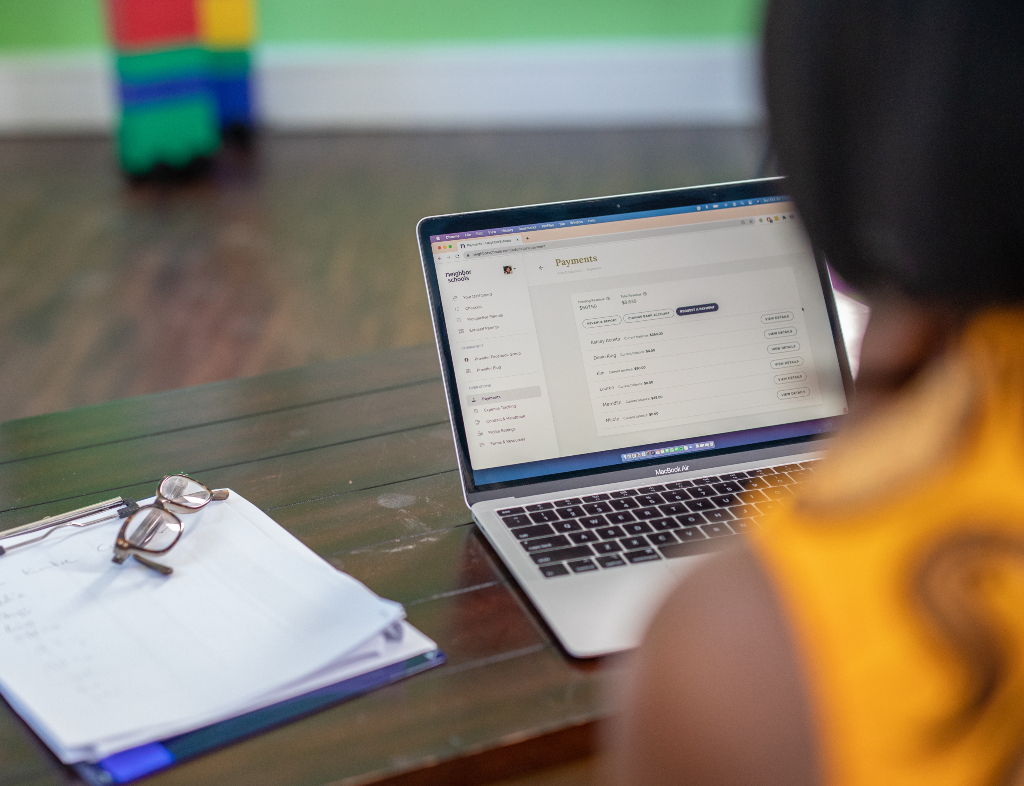

Become a “Sole Proprietor”
There are different ways to establish your business. We recommend “Sole Proprietorship,” which is the most common way for small businesses in the US. As a Sole Proprietor, you own 100% of your business, and it isn’t taxed separately—your income and your business’ income are the same thing. Plus, you don’t need to take any formal steps to set up as a sole proprietorship, which keeps it simple.
Apply for an EIN
A Federal Employer Identification Number (EIN) allows the government to track your business without using your personal Social Security Number (SSN). Parents will need your EIN for their IRS tax forms, which allows them to take advantage of child care tax breaks. Having an EIN means you don’t need to share your SSN with your customers.
Keep taxes in mind
When you’re an employee, your employer withholds your taxes and then you may get a refund during tax season. But when you start a daycare in your home, you’ll handle taxes differently.
You’ll have to work with a CPA to pay Quarterly Estimated Taxes. These cover your income tax, social security, and medicare contributions. You’ll start paying once you’re up and running with enrollments, based on how much profit you expect to generate in a calendar year.
For tax purposes, it’s important to start tracking business expenses immediately. But we recommend waiting 3 to 6 months to sit down with a CPA to discuss quarterly tax payments. Until you have a predictable income, it often doesn’t make sense to make estimated payments.
Get insured
Your homeowner’s insurance doesn’t cover your business. All providers should take out a separate General Liability insurance policy.
Imagine a prospective parent comes for a tour and slips on your stairs and injures herself. If they choose to sue you, you’re protected. These policies, which offer up to $3 million in coverage, are very affordable—usually about $50 a month.
Registering your business, like getting licensed, can be different in each state. To understand exactly what your state requires, be sure to download the free 5-Part Guide for your state.
Part 4: Find Your First Families
It might seem strange to begin advertising your business before you receive your license, but it’s an important part of launching your daycare successfully.
Today, most parents are starting their search for child care online. That’s why it’s critical to have an online marketing plan. When you choose to open your daycare with NeighborSchools, we’ll take care of all of this for you.
Tell your story
People relate to stories. And parents gravitate towards the experiences and events that have shaped your life. Take some time to think through your story and how you might share it with families. These prompts can help:
Why did you get started working with young children?
Who was your most memorable teacher?
Describe a child that’s had the greatest impact on you.
Set up online profiles
To make sure parents can find you when they’re searching online, you’ll want to have a website. It’s also a good idea to update your Facebook profile and set up a Google My Business account.
Spread the word
You can do this both online and offline. Join local Facebook groups for parents and introduce yourself. Then create flyers and business cards that you can post on local bulletin boards and hand out at farmers’ markets, PTO meetings, or even your own child’s soccer game.
Get enrollments
When a parent’s interested, you should schedule a tour to show them around and discuss your daycare. After that, you’ll send a contract, get their deposit, and enroll their child in your program.


Part 5: Opening Day & Beyond
At this point, you’ll have your license and families ready to go. You’re set up for success. To make sure your business keeps thriving, there are a bunch of things to do on a regular basis once you start your home daycare.
Daily
- Keep a written record of attendance. You’ll take this with you whenever you and the kids leave the property.
- Maintain “Records of Observation.” If you see anything out of the ordinary, you should record it and discuss it immediately with the parents. This is for liability reasons.
Weekly
- Create your program plans and make sure you have the supplies you need for your planned activities.
- Spend an hour a week reviewing and recording your business expenses. Don’t forget to keep receipts whenever you spend money for the program.
- Nap time on Friday is a great time to do a deep clean. That way, you can relax going into the weekend and know that your daycare will be clean for the new week ahead. But, remember, you can’t leave children unsupervised during nap time.
Monthly
- Conduct and log an evacuation drill. You and the children will all leave the daycare and assemble at a predetermined meeting spot.
- Test your smoke detectors.
Quarterly
- Complete and share progress reports with parents.
- Pay estimated taxes.
Yearly
- Complete your required hours of certified continuing education.
- Renew your pediatric CPR certification.
- Get updated permission forms from parents.
Ready to Open Your Home Daycare?
Starting a home daycare is a significant undertaking, but it’s also a rewarding career that will make a difference in your community. Learn more about how to start your home daycare in our video below.

